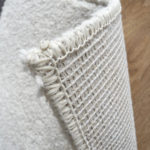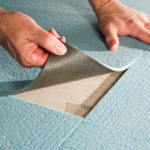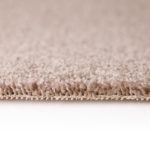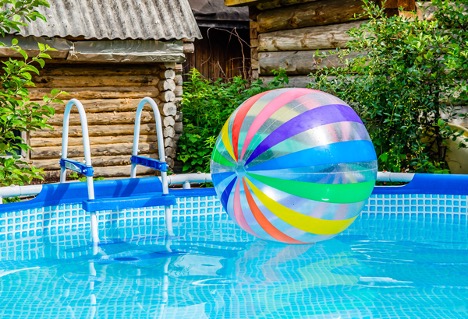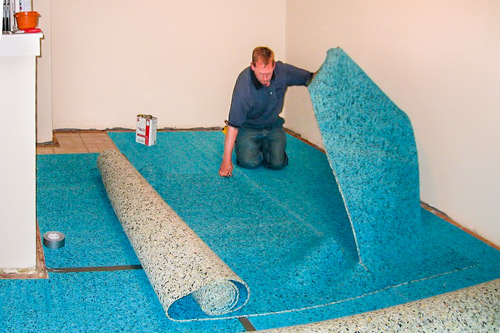Types of carpet
Sooner or later, everyone faces the question of how to make their home more comfortable, warm and cozy. And one of the options for solving this problem is to lay carpet on the floor. But questions often arise that prevent you from making the right choice. To help better understand this relatively new type of coating (it appeared in the 50s of the last century), it is worth considering all its features and distinctive characteristics.
The content of the article
What are the different types of carpet?
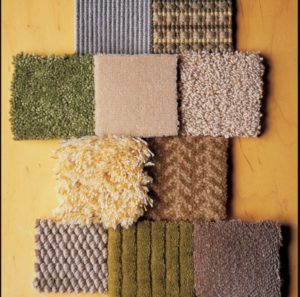 When choosing a carpet, you need to immediately realize that this covering can be either natural or synthetic. And each of them has its own advantages and disadvantages.
When choosing a carpet, you need to immediately realize that this covering can be either natural or synthetic. And each of them has its own advantages and disadvantages.
Cotton, wool, sisal, jute, linen, bamboo, coconut fiber make the coating environmentally friendly and natural. Provides good hygroscopicity. They are not subject to strong electrification, and therefore do not attract or retain dust and dirt on their surface. But their wear resistance is much less than that of synthetic carpets.
Polyacrylics, polyester fibers, polyamides, olefins and others are used as synthetics, making this type of coating “inedible” for various types of insects. Synthetic carpet lasts much longer than its natural counterpart, and besides, there is noticeably much less dirt on it.
In addition, such carpeting may differ in surface structure. There are:
- Woven surfaces - these old technologies allow you to create a fairly durable structure. Not subject to rapid abrasion. Jute is used as a base, into which the thread is woven. But this technology is quite expensive.
- Tufting. In another way, such a surface is also called needle-pierced. This method is the most common and accessible today. It also has a base, which is most often used - jute, felt, rubber.
- Needle-punched technology allows you to obtain a texture of the top layer that resembles felt. The fiber on such a carpet gets tangled, forming a kind of single mass.
- The flocked surface is the newest and is obtained by applying an electric current to a synthetic fiber, which takes the correct position under its influence, after which it is attached to the base. The result is a velvety, densely packed texture.
If we talk about the splendor and softness of the carpet, they depend on the height of the pile of the covering, which can range from 2 to 12 mm.
Characteristics of different types of carpet
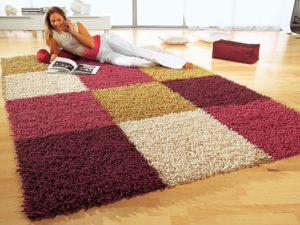 If you need to choose a carpet, then first of all you should consider which room it will be installed in. This is an important point, since different rooms have their own specific operational requirements.
If you need to choose a carpet, then first of all you should consider which room it will be installed in. This is an important point, since different rooms have their own specific operational requirements.
If the room is overly exposed to moisture, then you should choose synthetic fibers, since mold and fungi spores can very quickly grow in natural fibers. And the problem can be eliminated only by removing such a coating and treating the floor underneath with special solutions. For example, for the kitchen or dining rooms it is better to choose synthetic flooring.
If this is a children's room, then it is better to choose natural materials with medium-height pile; they will help maintain an environmentally friendly environment in the room where children are. Such materials do not emit any harmful substances into space.
For living rooms, you can choose any material. Here they rather rely on the requirements of the style of the room.
For the bedroom, you can also choose both synthetic and natural materials. In this room you can lay a carpet that has a higher pile, thereby providing more comfort.
How different types of carpet are produced
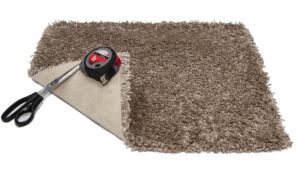 Depending on the production technology, carpet can have either one pile height or be multi-level. This achieves greater artistic expressiveness.
Depending on the production technology, carpet can have either one pile height or be multi-level. This achieves greater artistic expressiveness.
If we talk about dyeing methods, it is worth noting that the carpet can be dyed after the surface has been formed, or it can use pre-dyed threads, which, woven in a certain order, form the intended pattern.
Most carpets use this type of technology, in which a thread is woven onto a selected base in one way or another. Nodules may form on the reverse side, which can then be cut off and then fixed. But in this case, it is important how many stitches (or, more simply, needle strikes) are made per square inch. In order for the product to serve as long as possible and not wear out too quickly, there should be at least 800 such needle strikes, that is, stitches. It is optimal when this parameter is in the range from 800 to 1200.

